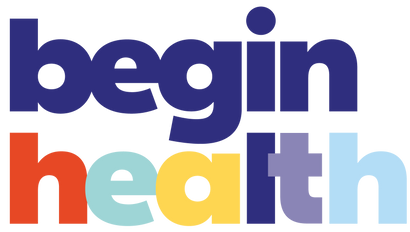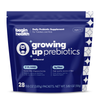Your Cart is Empty
Continue shoppingHow Artificial Colors Impact Your Kid's Health
Medically Reviewed by May Zhu, RDN | Published May 29, 2024
share this article

Artificial colors are commonly found in a wide variety of foods, drinks, and snacks marketed to kids. While these colors make products visually appealing, growing concerns about their potential health impacts have prompted many parents to re-evaluate their kiddos' diets. In this blog, we’ll explore how artificial colors can affect kids' health, now and into their future.
What Are Artificial Colors?
Artificial colors are synthetic dyes used to enhance the appearance of food and beverages. These colors are made from petroleum and other chemical sources and are approved for use by regulatory agencies like the FDA. However, the safety of these additives has been a topic of debate for decades.
Daily reads to help your little ones lead happier and healthier lives.
Buy Now
Join the
Happy Gut Club
Potential Health Impacts
-
Behavioral Changes: One of the most significant concerns regarding artificial colors is their potential link to behavioral issues in kids. A study published in The Lancet found that artificial food colors and preservatives could increase hyperactive behavior in kids [1]. The study involved 297 kids aged 3 and 8-9 years, and those who consumed a drink containing artificial colors and sodium benzoate showed increased hyperactivity compared to those who did not.
-
Allergic Reactions: Some kids may experience allergic reactions to certain artificial colors. Research in the Journal of Allergy and Clinical Immunology reported that artificial dyes such as tartrazine (Yellow No. 5) can cause allergic reactions, including hives and asthma, in sensitive individuals [2]. The study estimated that approximately 1 in 10,000 people might experience such reactions.
-
Carcinogenic Concerns: There are also concerns about the potential carcinogenic effects of some artificial colors. For instance, Red No. 40 and Yellow No. 5 have been subjects of studies due to their potential links to cancer. According to a report from the Center for Science in the Public Interest, certain artificial colors have been found to contain carcinogenic contaminants, though the levels are generally considered safe by regulatory agencies [3].
-
Impact on Learning and Concentration: Artificial colors may affect learning and concentration in kids. A review published in the Journal of Developmental & Behavioral Pediatrics highlighted that some studies have shown a correlation between the consumption of artificial colors and decreased attention span and increased impulsivity in kids with ADHD [4].
-
Digestive Issues: Artificial colors can also cause digestive problems in some kids. Research in the Journal of Toxicology and Environmental Health found that artificial dyes can alter the gut microbiota and lead to gastrointestinal issues such as bloating, diarrhea, and abdominal pain [5].
Regulatory Actions and Recommendations
Due to these potential health risks, some regulatory actions have been taken. For example, the European Union requires a warning label on foods containing certain artificial colors, stating that they may have an adverse effect on activity and attention in kids. In the United States, the FDA continues to evaluate the safety of artificial colors but has not mandated such labels.
Parents who are concerned about the impact of artificial colors on their kids' health can take several steps:
-
Read Labels: Check food labels for artificial colors and choose products without them.
-
Natural Alternatives: Opt for foods colored with natural alternatives like beet juice, turmeric, and annatto.
-
Whole Foods: Emphasize whole, unprocessed foods in your kid's diet.
Summary
Artificial colors in food and beverages can have various adverse effects on kids' health, including behavioral changes, allergic reactions, potential carcinogenic effects, impacts on learning and concentration, and digestive issues. By being mindful of these risks and making informed dietary choices by reading labels, choosing natural alternatives and whole foods, parents can help protect their little ones' health and well-being.

Author
May Zhu, RDN
Trending

How to Choose a Baby Supplement: What Parents Need to Know
read now
5 Eczema-Safe Recipes That Soothe from the Inside Out (And Your Kids Might Actually Eat)
read now
3 Powerful Strategies to Clear Your Kid’s Eczema for Good
read now






